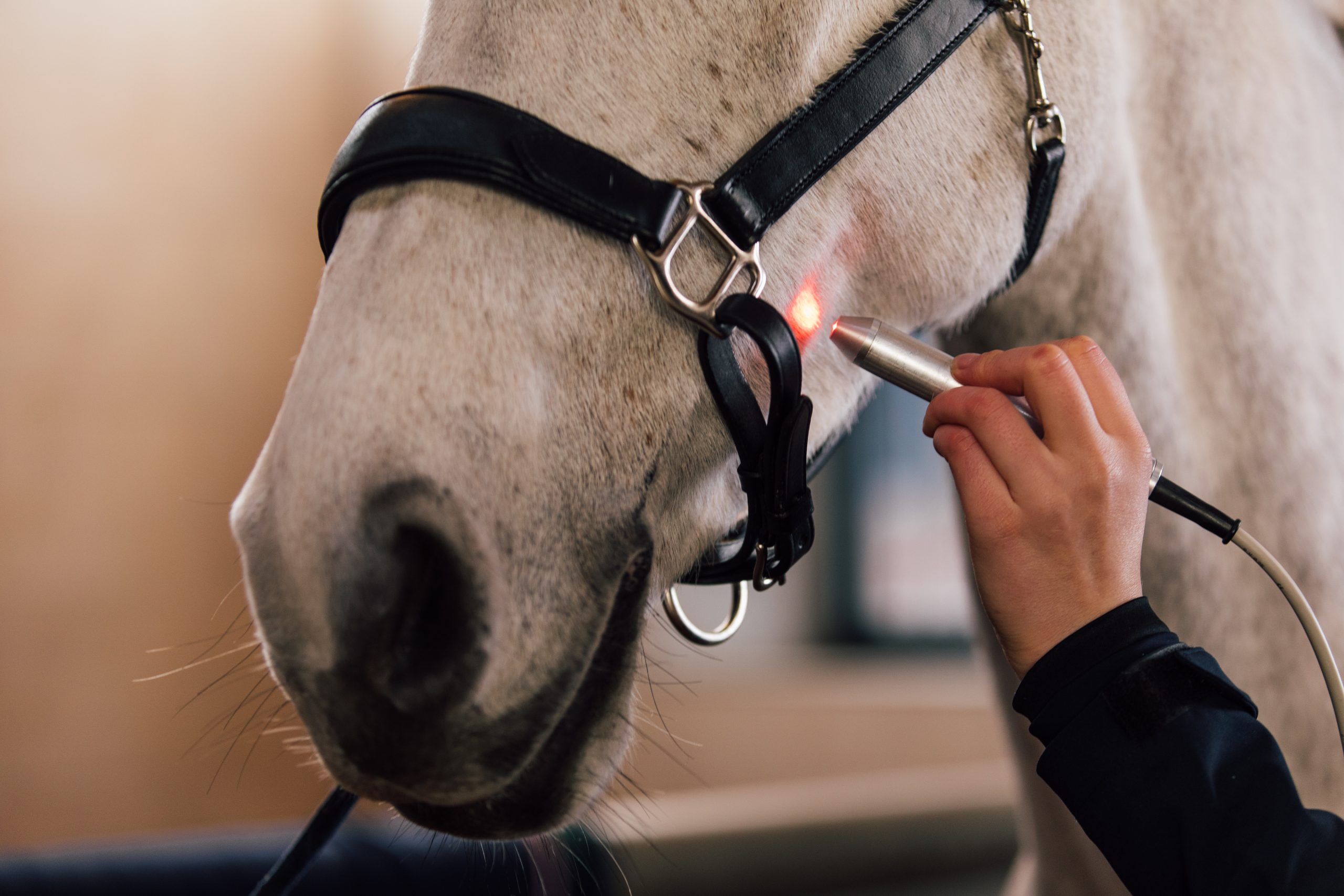Whatever You Need to Learn About Equine Therapy for Mental Health
Wiki Article
How Laser Treatment in Horse Treatment Is Transforming Veterinary Look After Equines
Laser therapy has become a transformative strategy in equine veterinary care, giving a non-invasive remedy that quickens recovery and enhances total wellness. Leveraging precise light wavelengths, this advanced treatment boosts cellular regrowth, minimizes inflammation, and minimizes discomfort. Its efficiency prolongs from bone and joint injuries to chronic ailments like osteo arthritis, dramatically boosting movement and life quality for equines. The portability and convenience of laser therapy tools even more underscore their expanding indispensability among vets. As we check out the detailed technicians and real-world successes, the extensive influence on equine clinical methods comes to be progressively noticeable.Recognizing Laser Therapy

The innovation behind laser treatment is based in the concept of photochemistry, where photons are soaked up by chromophores within cells, resulting in raised ATP production and modulation of responsive oxygen species (Equine Therapy). This, consequently, advertises mobile proliferation, minimizes swelling, and speeds up healing. Vet experts utilize different kinds of lasers, including low-level lasers (LLLT) and high-power Class IV lasers, depending on the specific therapeutic objectives and the nature of the equine problem being dealt with
Various laser wavelengths and power setups are carefully selected to target numerous cells midsts and accomplish desired clinical results. Security procedures are critical, as improper use can bring about thermal damages or suboptimal healing results. Therefore, a detailed understanding of laser therapy's devices and applications is critical for its reliable implementation in equine veterinary method.
Advantages for Equine Health
The myriad benefits of laser therapy for equine health and wellness include improved healing, pain decrease, and improved wheelchair. This advanced therapy modality leverages certain wavelengths of light to permeate tissues, promoting mobile function and advertising rapid tissue fixing. The non-invasive nature of laser treatment makes sure minimal anxiety and pain for the horse, promoting a smoother recovery procedure.
Boosted recovery is one of the leading benefits, as laser therapy accelerates mobile regrowth and collagen synthesis. Discomfort decrease is attained via the anti-inflammatory results of laser therapy, which decreases swelling and minimizes the manufacturing of pain-inducing chemicals.
By decreasing swelling and discomfort, and enhancing tissue repair work, laser treatment aids in bring back joint function and muscle mass adaptability. Therefore, laser therapy stands as a transformative tool in modern horse veterinary treatment.
Typical Problems Treated
Laser therapy has actually become a flexible therapy alternative for a selection of typical equine read this article conditions. Amongst these, musculoskeletal injuries are particularly responsive to laser therapy. Equine Therapy. Soft cells injuries, such as tendonitis and tendon strains, advantage from the anti-inflammatory and analgesic impacts of laser treatments, which increase healing and reduce discomfort. In addition, laser treatment works for problems like osteoarthritis, where it helps mitigate joint swelling and promote tissue repair work.Wound management is an additional area where laser therapy has actually revealed significant pledge. Persistent wounds or slow-healing abscess can be specifically difficult in steeds, but laser therapy improves mobile regeneration and enhances blood flow, hence accelerating the recovery procedure. Laser therapies have been effectively used in managing hoof problems such as laminitis and abscesses, alleviating pain and advertising faster healing.

Technology Behind Laser Treatment
Past the myriad conditions treatable with laser therapy, the technology itself advantages better examination. At the heart of laser therapy is using specific wavelengths of light to penetrate cells and generate biological responses. These wavelengths, typically ranging from 600 to 1000 nanometers, are selectively soaked up by chromophores in the skin, muscle mass, and other tissues, prompting a waterfall of cellular occasions.Laser devices used in vet medicine frequently utilize low-level laser treatment (LLLT) or chilly laser therapy. Unlike high-powered medical lasers, these gadgets operate at reduced energy levels, maximizing restorative benefits while decreasing thermal damage. The power from the laser light stimulates adenosine triphosphate (ATP) manufacturing, improves cellular metabolic rate, and speeds up tissue fixing procedures.

Success Stories and Instance Researches

Showcasing the substantial advantages of laser treatment, numerous success stories and study brighten its transformative influence on equine wellness. One such instance entails a pureblood racehorse suffering from chronic tendonitis. Standard therapies generated very little enhancement, however after integrating laser therapy into the program, the equine displayed considerable reductions in inflammation and pain within weeks, inevitably going back to affordable racing.
An additional engaging example features a dressage horse detected with extreme back discomfort, limiting its performance. A veterinary group used low-level laser treatment (LLLT) to target the irritated areas, causing significant enhancement in flexibility and a noteworthy decrease in pain. Over numerous sessions, the equine regained its peak form, showcasing the efficiency of laser treatment in dealing with musculoskeletal problems.
Additionally, a research study performed at a leading equine center taken a look at 50 equines with various soft cells injuries treated with laser therapy. The outcomes stood out: 85% of the equines demonstrated accelerated recovery times and enhanced mobility. These instances highlight the flexibility and effectiveness of laser treatment in equine medicine, using a non-invasive, scientifically-backed method to boosting healing and efficiency in horses.
Final Thought
Laser therapy is transforming equine veterinary treatment by supplying a non-invasive therapy that speeds up healing, lowers inflammation, and reduces discomfort. With its effectiveness in dealing with a range of problems, from bone and joint injuries to chronic disorders like osteoarthritis, this modern technology substantially enhances equine health and wellness and mobility. imp source The mobility and flexibility of laser treatment additionally underscore its transformative influence on vet practices, solidifying its function as an important tool in modern-day equine health care.Report this wiki page